How to make perfect homemade bread every time
Flour power
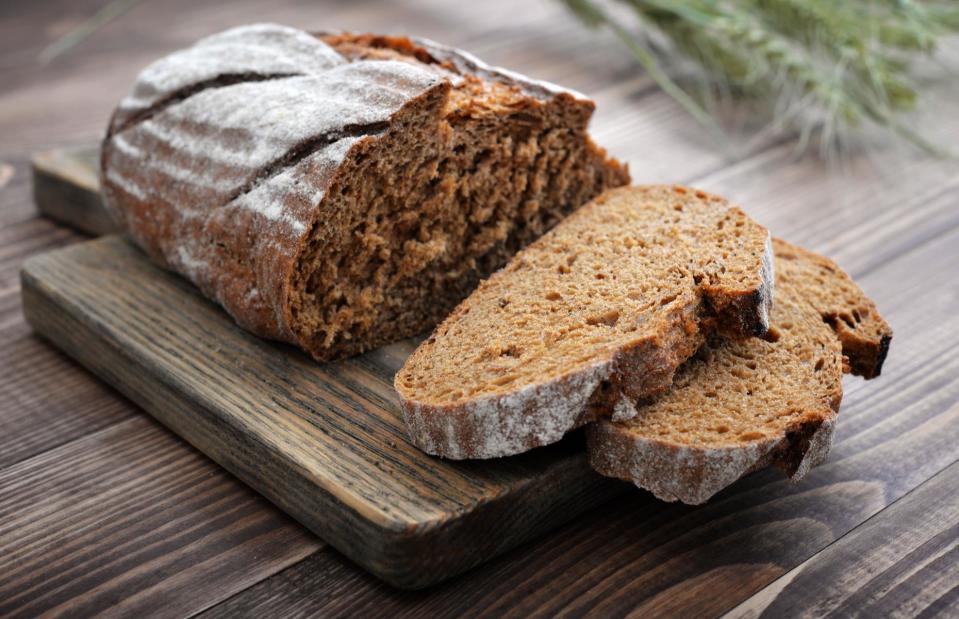
mama_mia/Shutterstock
Once you've baked your first loaf of bread, you may never stop. Nothing beats the gorgeous aroma in your kitchen than a freshly baked loaf. Our tips and recipes will help you master the basics and beyond, whether it's a simple white tin loaf, a show-stopping plait, an Irish soda bread, mastering a sourdough or a perfect pizza.
Getting started: know your flours
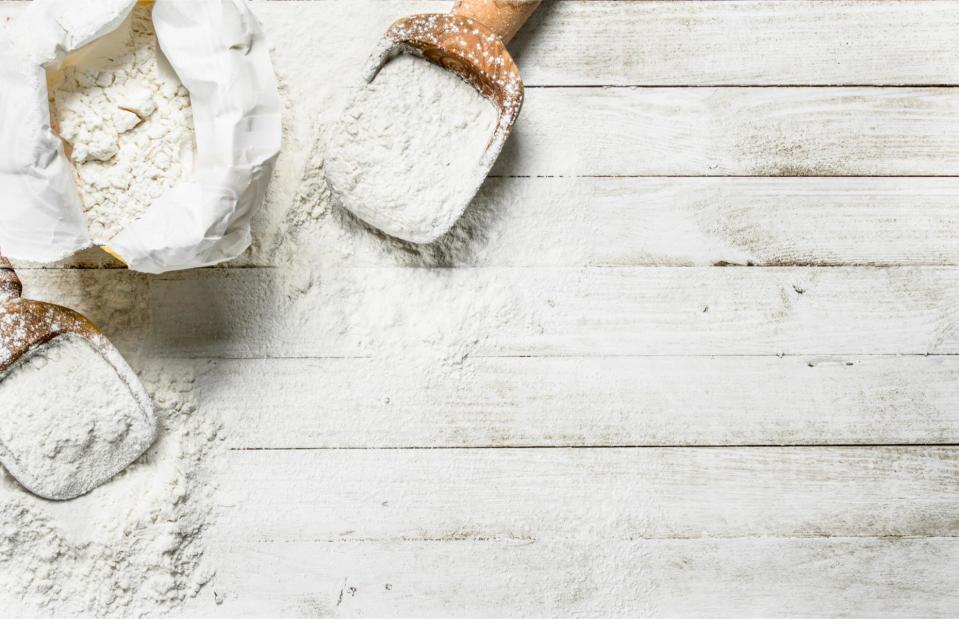
Artem Shadrin/Shutterstock
Strong flour, or strong bread flour, is made from hard wheat varieties. It contains more gluten than other types of flour, which gives it its elasticity and ensures the dough rises with a good structure. If you can, it's worth tracking down Canadian strong flour, which contains a higher gluten content to give you the best loaf. After all, basic bread is just flour, yeast, salt and water, so your flour is very important.
Getting started: give spelt a go
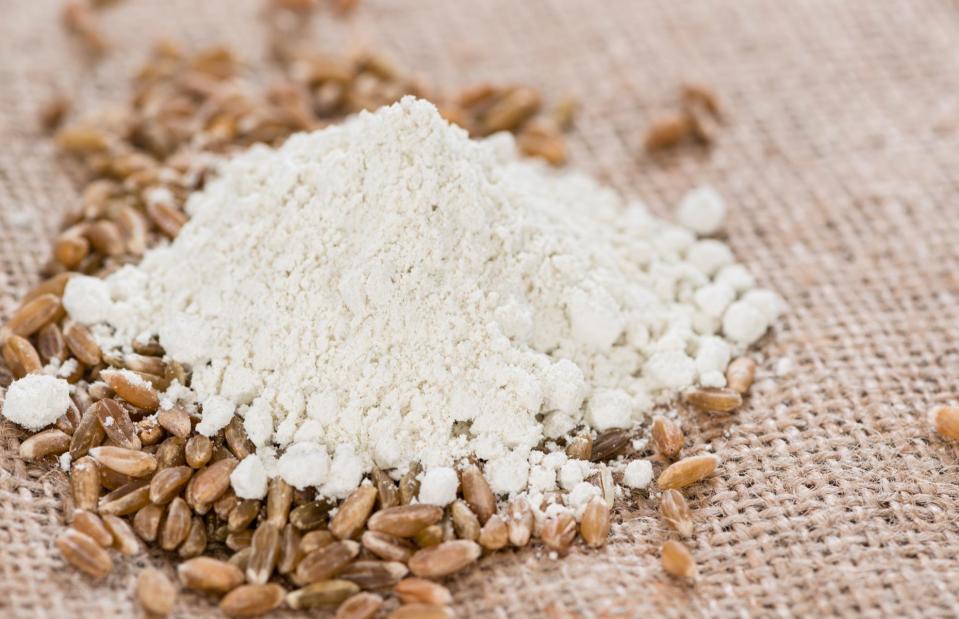
HandmadePictures/Shutterstock
High-fiber spelt has been cultivated for thousands of years and has recently been making a comeback. As a flour for baking, the gluten breaks down more easily than wheat flour so use spelt in a bread which you don't have to knead. For example, it works very well in a soda bread.
Getting started: try wholemeal for a healthier loaf

Dar1930/Shutterstock
Strong wholemeal flour is higher in fiber than white flour. It absorbs more water and requires more kneading. A loaf made with 100% wholemeal flour will be quite dense, but perfect for toast. Most bakers prefer to mix half-and-half strong wholemeal with strong white flour which gives the loaf a more complex, nutty flavor and, of course, added health benefits.
Getting started: what about rye flour?
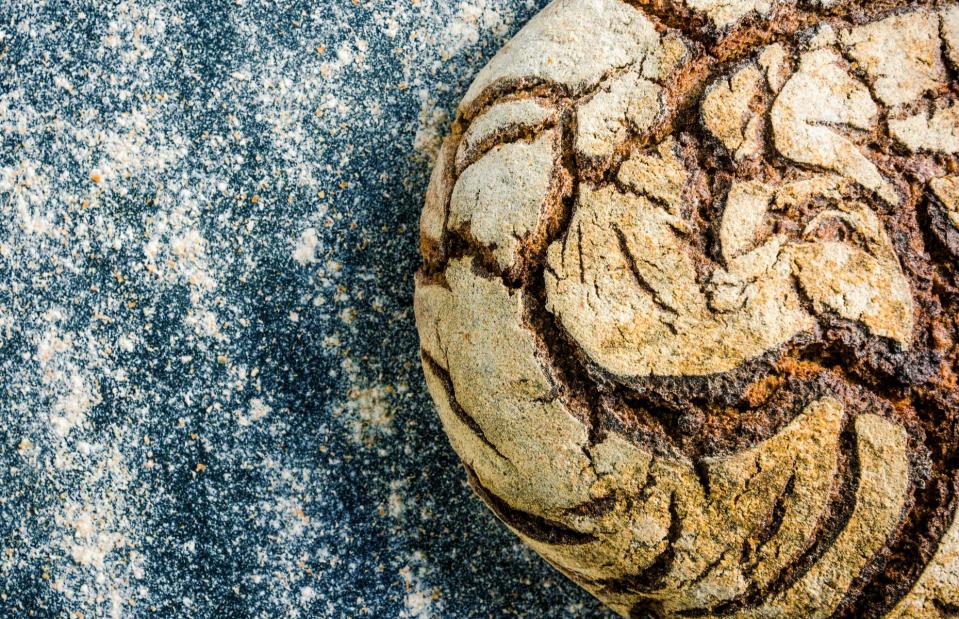
marcin jucha/Shutterstock
Rye is actually a grass but it's related to wheat. It does contain some gluten but produces a heavy, sticky dough which takes longer to rise than strong white flour. However, the flavor more than makes up for it. It's earthy and chewy and perfect for crisp breads topped with gravadlax or cream cheese, salami and pickles.
Getting started: dried vs fresh yeast
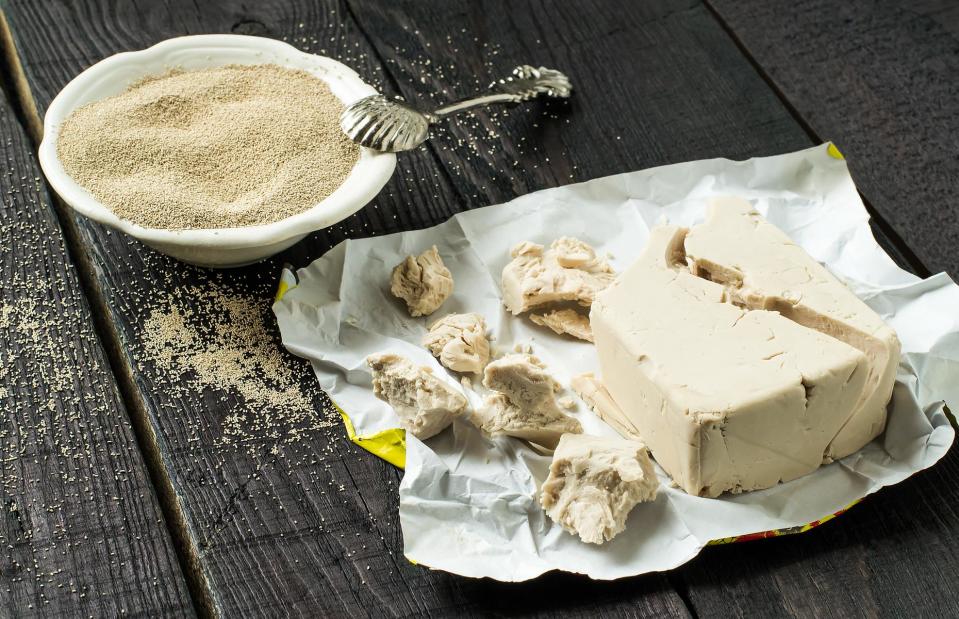
13Smile/Shutterstock
You can use either fresh or dried yeast in bread-making, although fresh gives it a more obviously yeasty flavor. Fresh yeast needs to be proved before using. Add a little sugar and warm water, and it will begin to bubble and ferment. If it doesn't, your yeast is dead. Fresh yeast can be frozen then thawed at room temperature, as it has a short shelf life. If you use instant dried yeast, buy in small quantities and always check the use-by date on the packet, or your lovely loaf won't rise.
Getting started: sourdough starters
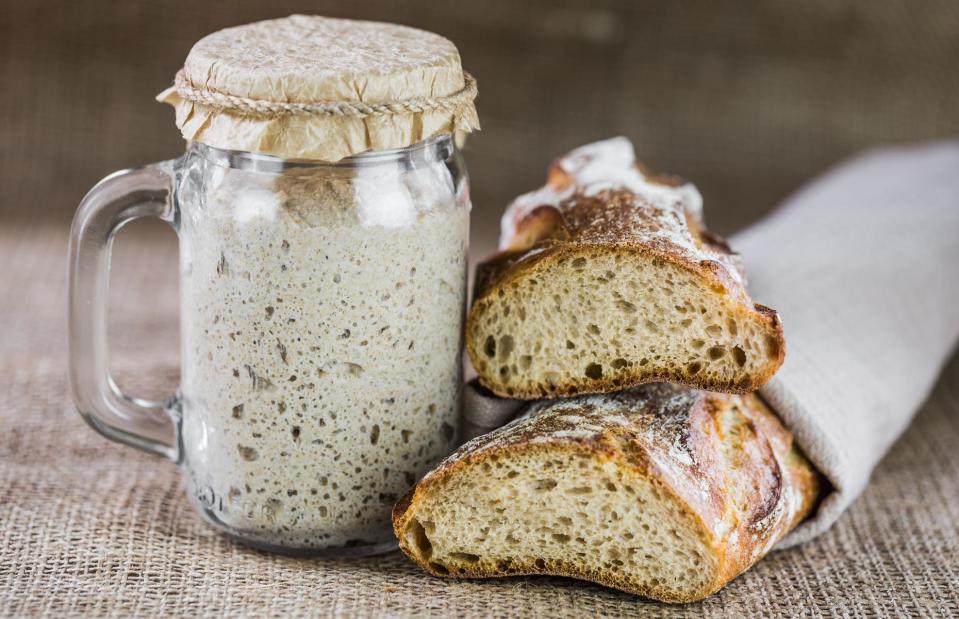
Zagor Inna/Shutterstock
A sourdough starter, or a levain, is simply a mix of flour (usually half white and half wholemeal) and water. It's then left to allow the natural wild yeasts and bacteria in the flour and the air to thrive and multiply. This 'mother dough' is added to your bread recipe and acts as a natural yeast. This is why the flavor of sourdough is different to a loaf made with commercial yeast. The starter varies according to the weather and your location.
Getting started: the right kit
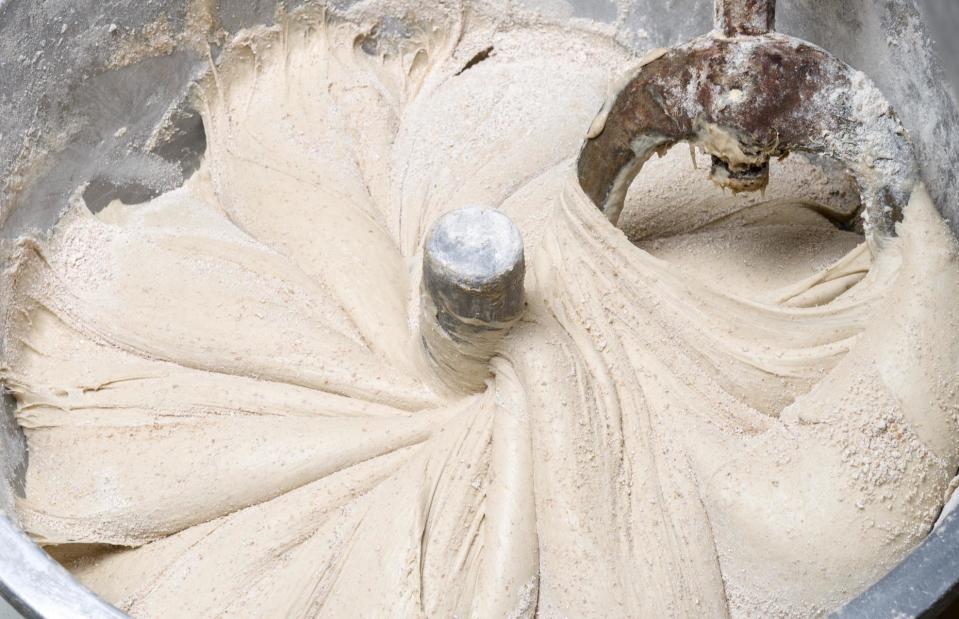
Svetoslav Radkov/Shutterstock
In theory, you don't need any special equipment to make bread but it's definitely worth getting digital scales. Accurate weighing is an essential for baking. If you're really committed, the best item to buy is a stand mixer which has a dough hook, or even an electric hand whisk with a dough hook. It's a huge time-saver. A baking stone is a good investment for pizzas and bread, and a pizza cutter is handy for shaping rolls and breadsticks.
Top tips: the need to knead
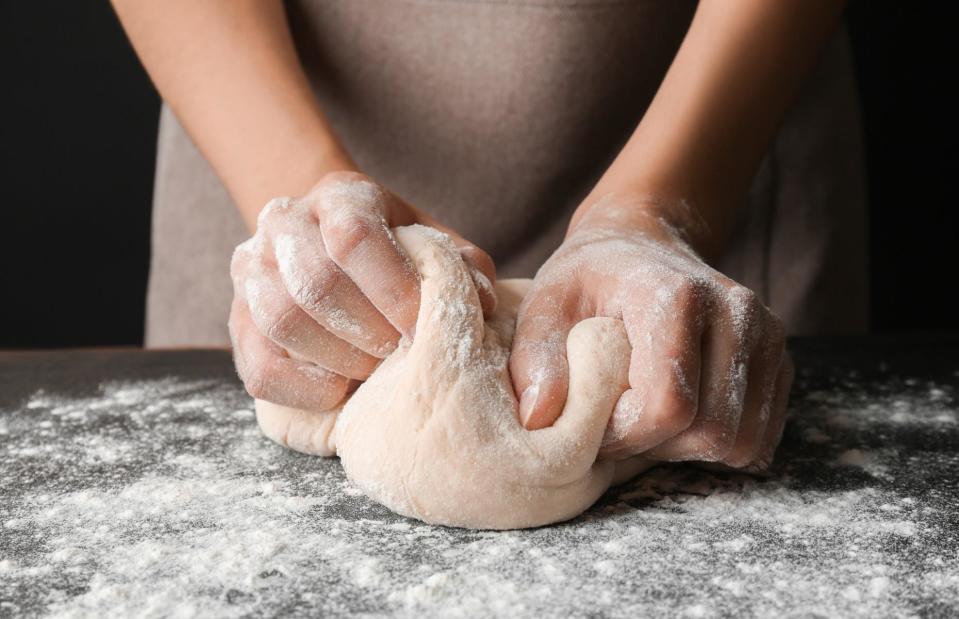
Africa Studio/Shutterstock
Kneading dough helps distribute the yeast to get an evenly-risen loaf, and develops the gluten which makes your bread rise. It makes the bread light and airy. You want to achieve a springy elastic dough and it's best done in a mixer, if you have one. Continue kneading until the dough is smooth, no longer sticky and springs back when pressed with your finger. It usually takes about 10 minutes in a mixer but double the time if you're doing it by hand.
Top tips: the jargon buster
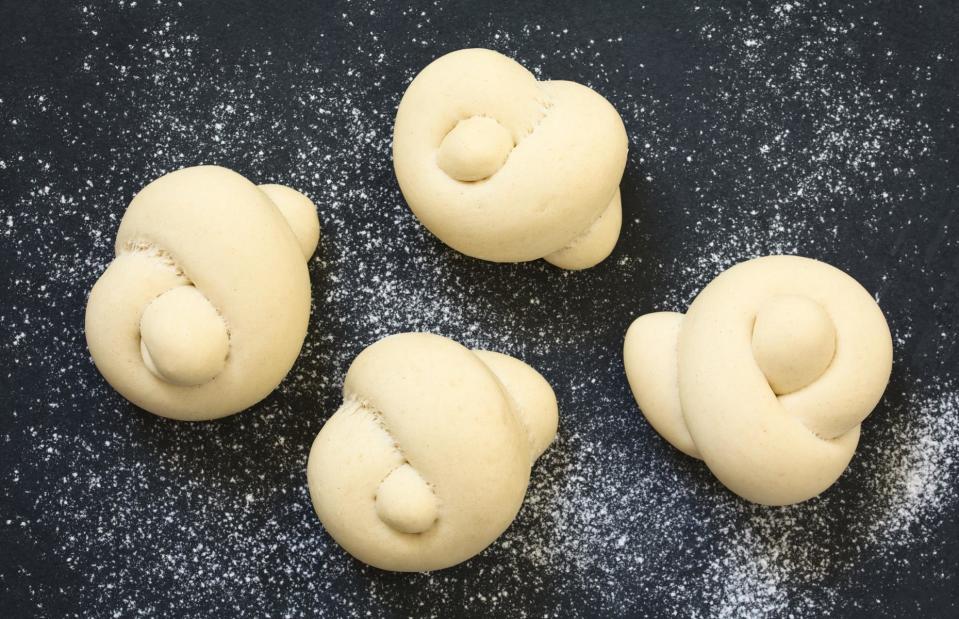
Ildi Papp/Shutterstock
Once the dough has been kneaded, put it into an oiled bowl, cover it with oiled plastic wrap and leave it for its first rise, when it should double in size. Then, knock the dough back (also called punching it down). This is when you beat the air out of it to create an even texture in your loaf. Knead it a couple of times then shape it. Now, leave to prove again in its tin, lightly covered with oiled plastic wrap, for about two hours. You can't rush this second fermentation.
Top tips: unbeatable baguettes
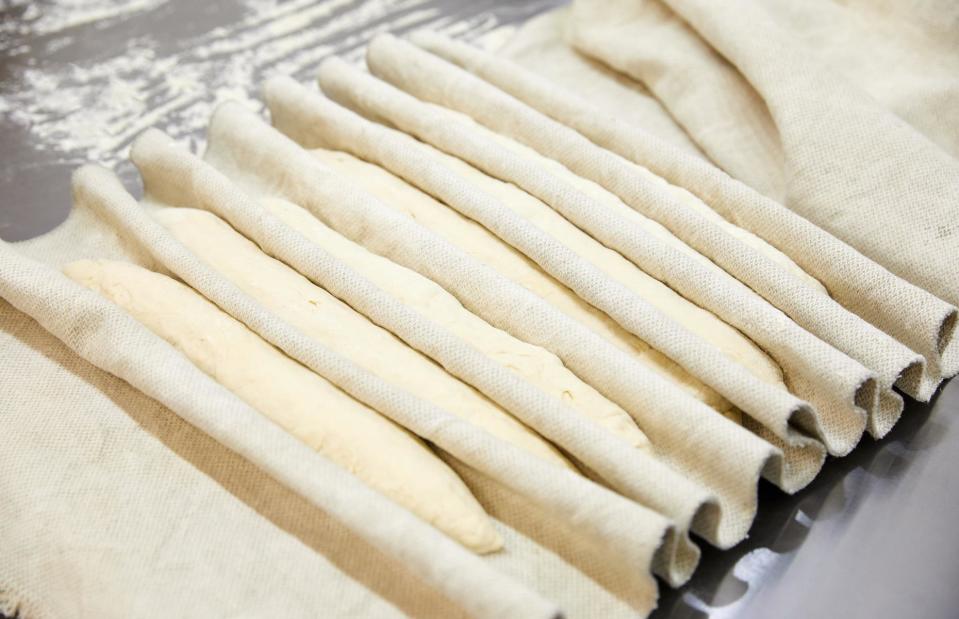
Dzmitry Ryshcuk/Shutterstock
When you're confident in your bread skills, why not have a go at a classic French baguette? Meaning stick, the recipe and size are set in French law. A baguette is made with a starter dough the day before, similar to the idea behind sourdough. To achieve the quintessential shape, you need what's called a baker's couche, or cloth (pictured). But you can improvise by using a large, heavily floured tea towel. Baguettes are baked in a hot oven with steam, so pop a roasting tin of water in your oven to mimic the effect.
Top tips: working with rye
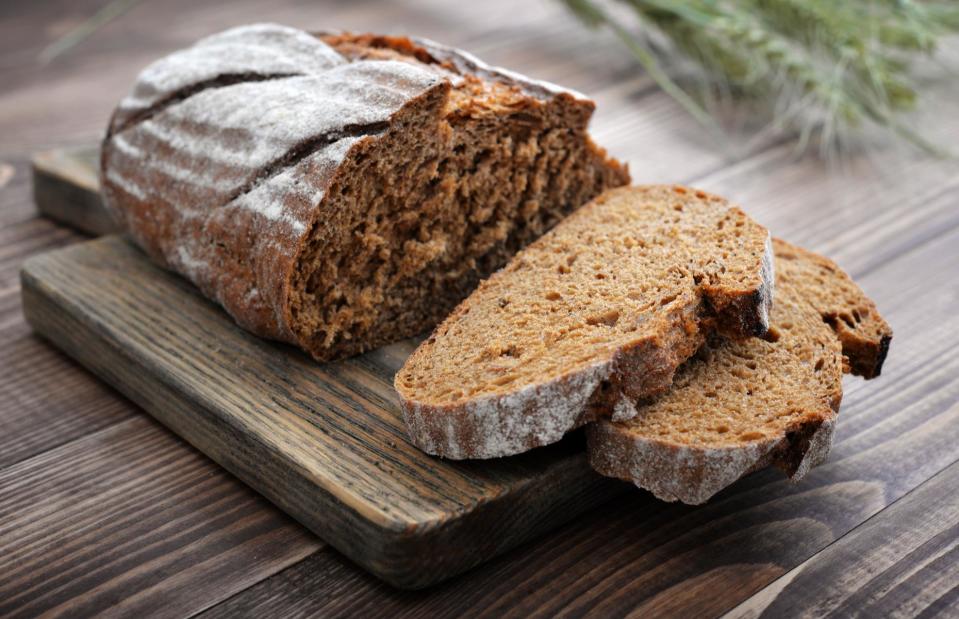
mama_mia/Shutterstock
Rye flour is much lower in gluten than wheat flour, so it takes much longer to rise. It's best to leave it to rise for about 24 hours. Rye ranks low on the glycemic index (GI) and is high in fiber, so is a good healthy choice and perfect for Scandi-style sandwiches or toast. Some bakers mix rye with wholemeal; others add a tablespoon of black treacle or honey to the dough to add sweetness. Caraway seeds are a traditional addition in Germany, but you could swap them for fennel or pumpkin seeds.
Top tips: going gluten-free

Katarzyna Wojtasik/Shutterstock
Now you can buy gluten-free flour, bread-making for coeliacs is much simpler. You can't replicate bread made with wheat flour because the gluten helps the bread to rise, but at least there's the option. The only problem is that gluten-free bread doesn't keep well as it goes hard quite quickly. But you can freeze it, or better still, slice then freeze and use it for toast.
Get the recipe for gluten-free bread here
Top tips: pimp your burger

Ekaterina Smirnova/Shutterstock
Once you've mastered bread dough, burger buns are just as simple. When dividing up the dough, use a floured pizza cutter and weigh the dough balls on a digital scale so they are uniform. You can freeze them once baked, then wrap in foil to reheat in a medium oven for about 10 minutes.
Get the recipe for burger buns here
Top tips: mix salt and yeast gradually

How to Bake/Bloomsbury Publishing
You'll notice some recipes ask you to add the salt and yeast in separate sides of the bowl. It's because salt inhibits the fermentation of the yeast which helps the dough to rise. However, salt does help the gluten to develop and become elastic and stretchy.
Top tips: nail that crust
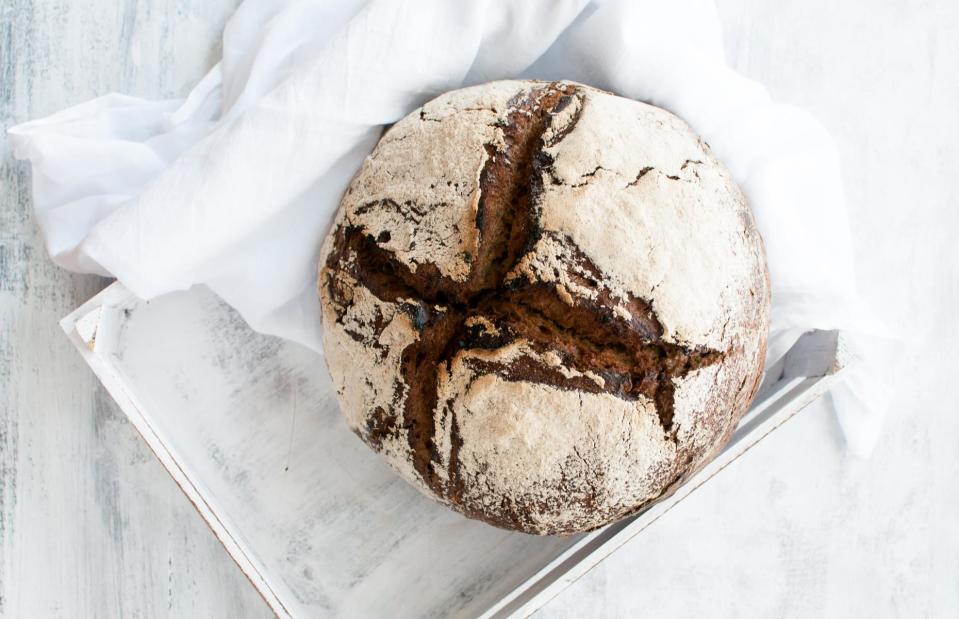
Ed-ya/Shutterstock
How you glaze or flour your bread will affect the crust of the final baked loaf. For a shiny crust, brush with a beaten egg white and a tablespoon of water before baking. For a soft crust, brush melted butter over after baking. For a crisp crust, mist the bread quickly with water several times during the first 10 minutes of baking. For a chewy, rustic bread, dust the dough with extra flour to give a chewier finish.
Top tips: learn from any mistakes

Pinkyone/Shutterstock
Here are some easy fixes for common problems. The loaf has holes in the middle? You under-kneaded it. The loaf is dense and dry? You over-kneaded it. The loaf is dry and crumbly? You fell into the trap of adding too much flour. Remember dough is sticky when you start so persevere and be patient. The loaf is soft and gooey in the middle? Underbaked. Tap the base of your loaf and it should sound hollow. If in doubt, cook a little further. The loaf is hard to slice? You probably couldn't resist slicing it straight from the oven!
Recipe: cornbread
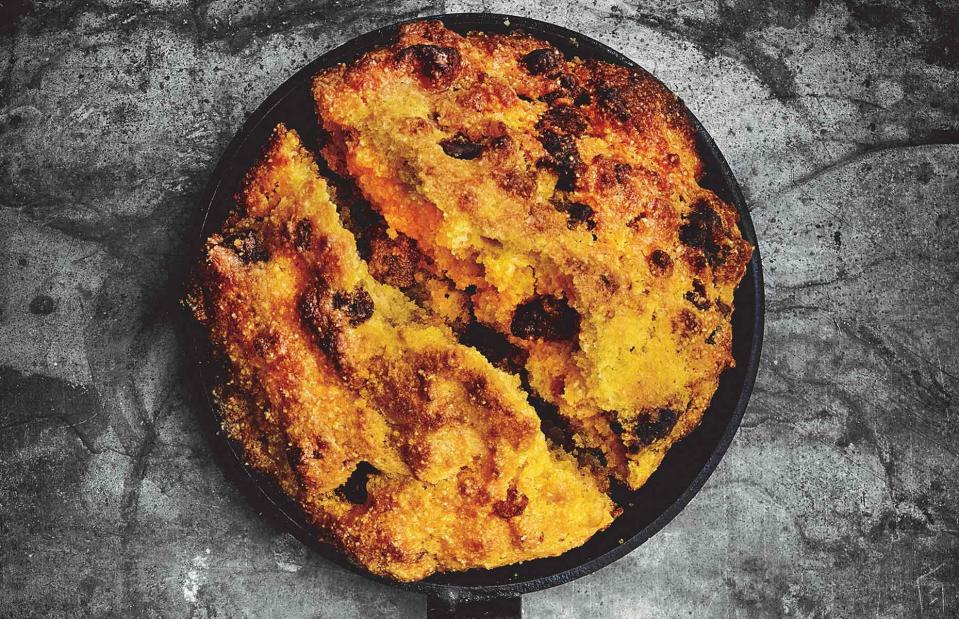
Jean Cazals/Kyle Books
Cornbread is a humble food with no yeast – the raising agent is baking soda combined with buttermilk. No buttermilk? Add a good squeeze of lemon juice to skimmed milk and leave for 20 minutes. It's quick to make and if you have leftovers, sprinkle over water then blast in a hot oven for five minutes or so.
Get the recipe for cornbread here
Recipe: enriched dough
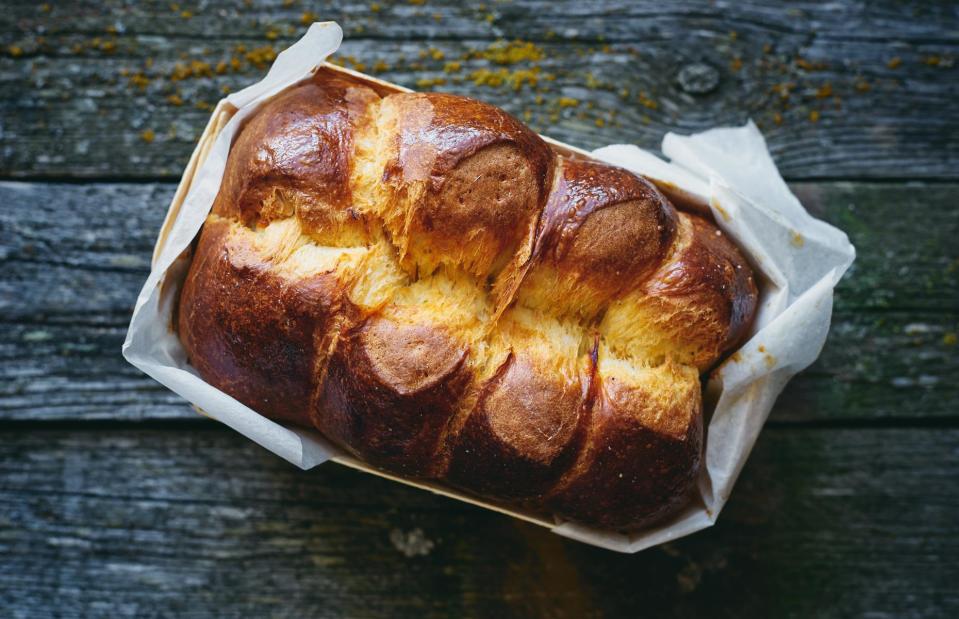
Alexsandrova Karina/Shutterstock
An enriched dough is one containing eggs and butter. Brioche and cinnamon buns are a couple of styles of enriched dough. It's best to use an electric mixer as you incorporate a lot of butter. These doughs take longer to rise because of the fat content, around two to three hours.
Get the recipe for cinnamon buns here
Recipe: soda bread
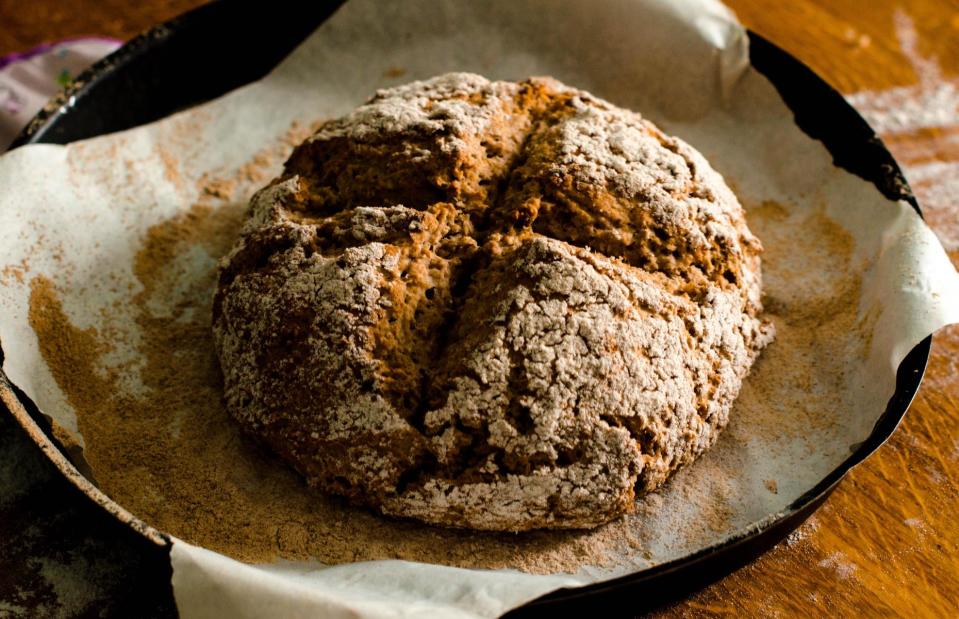
Amzhela Klepko/Shutterstock
A traditional Irish soda bread is super quick to make as there's no yeast used. The trick is to barely knead it or your loaf will be tough. It's just flour, buttermilk and baking soda, usually with a little treacle added. It's best to make it on the day you want it, although leftovers make perfect toast.
Get the recipe for soda bread here
Recipe: focaccia
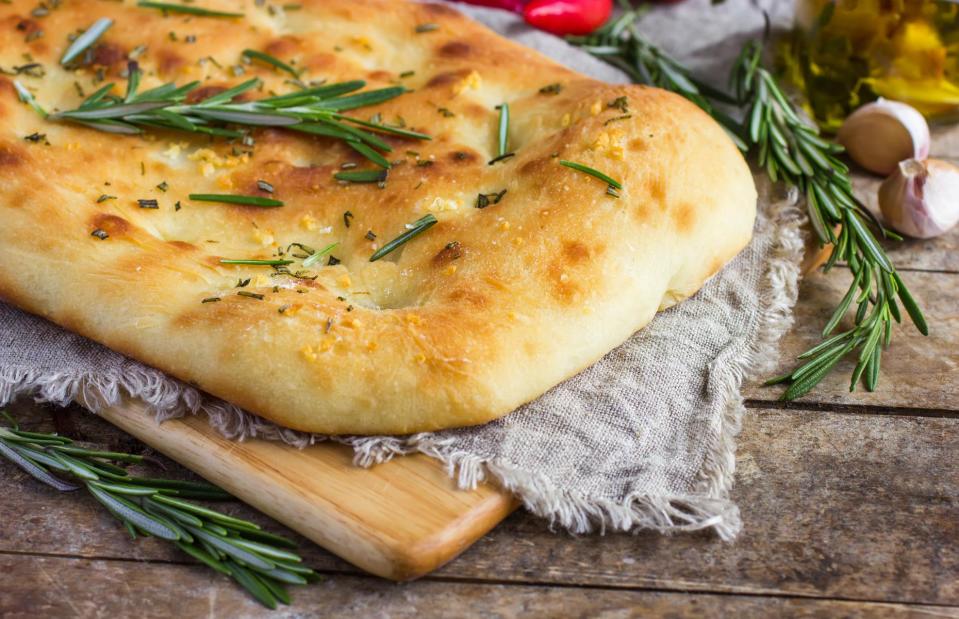
Anna Shepulova/Shutterstock
Focaccia is a flat-ish Italian bread flavored with olive oil, sea salt and fresh herbs. It's a perfect bread to make for an antipasti sharing platter. You can add your own toppings – try pitted olives, seedless grapes or rosemary – or incorporate fillings in the dough, like tangy cheese or walnuts. Don't skimp on the salt in any bread recipe as without it, your bread will be bland.
Get the recipe for classic oregano and sea salt focaccia here
Recipe: gluten-free focaccia
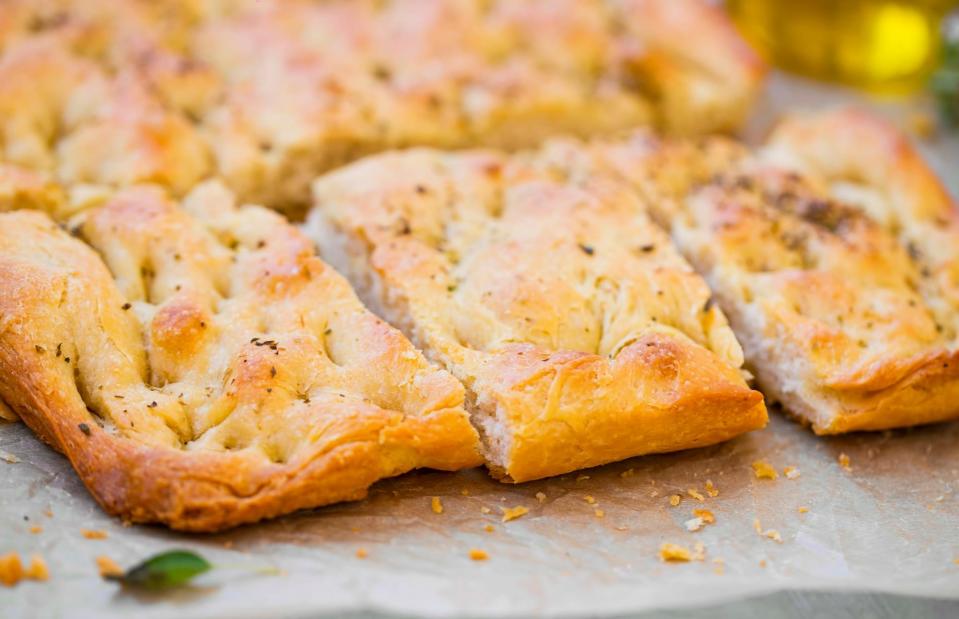
catalina.m/Shutterstock
You don't have to miss out on fabulous focaccia if you have a gluten intolerance. Use a blend of flours like tapioca, cornflour, potato flour and soya flour. Even better, you can use the same mix to create your own gluten-free pizzas.
Get the recipe for gluten-free focaccia here
Recipe: chapattis
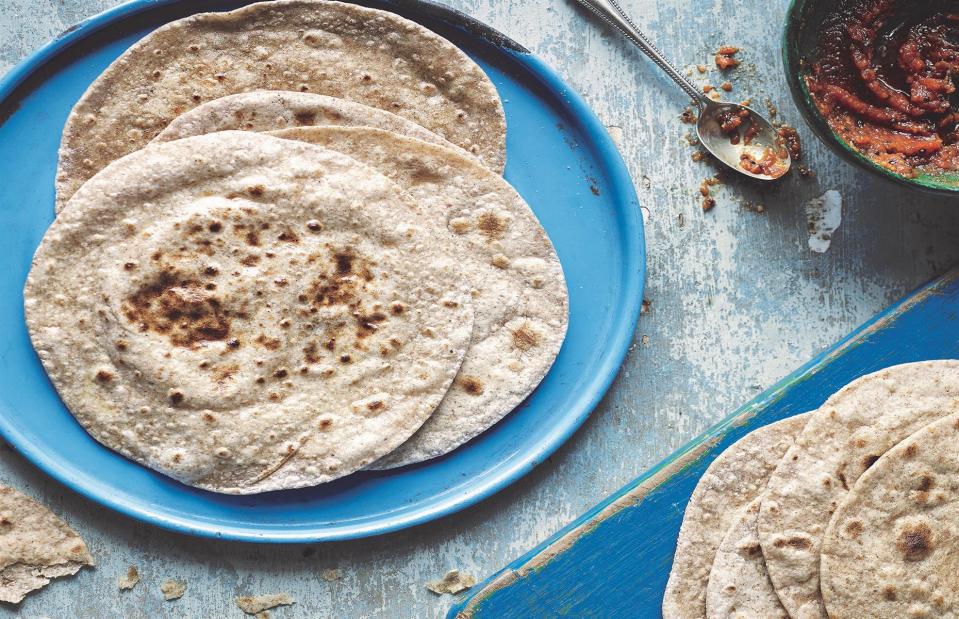
Nassima Rothacker/Mitchell Beazley
Almost every culture has a flatbread of some description. They are the simplest mix of flour, water and salt. Some are leavened (yeasted), such as pitta; some are not, such as Indian roti. Chapatti are made with a special flour called atta but you could use a half-and-half mix of plain and whole-wheat flour. Use the flatbreads to scoop up curries or as wraps.
Get the recipe for chapattis here
Recipe: ciabatta
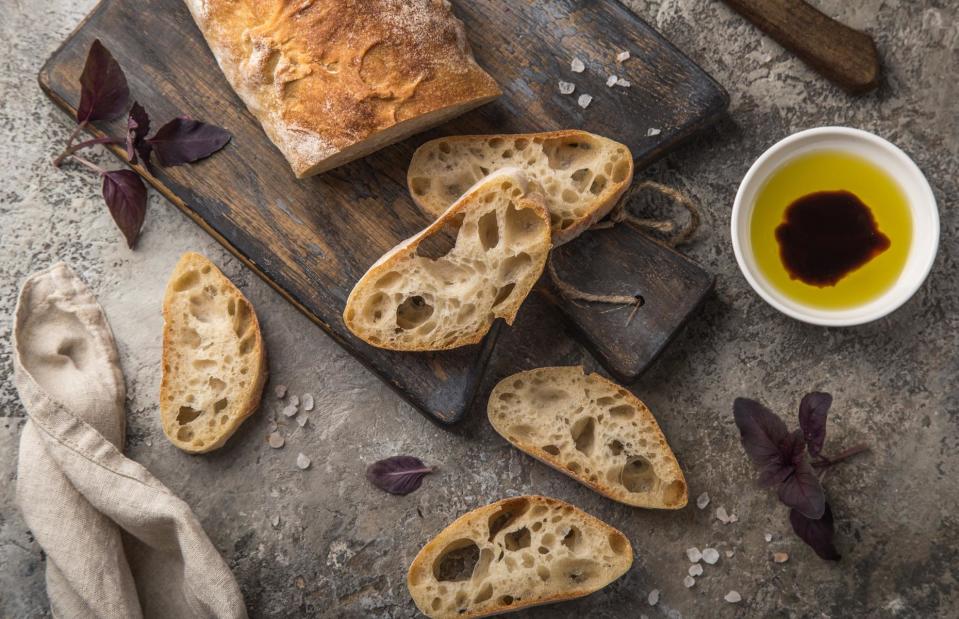
Anna Shepulova/Shutterstock
We love ciabatta with its floury crust and airy interior. It's easier to make than you would think, so put that supermarket loaf down. You really need an electric hand whisk or mixer as the dough is quite wet – it's what gives the bread that characteristic open texture. Some recipes use a starter dough which you need to leave for 24 hours, so plan ahead. The slow fermentation of the starter gives it the traditional acidic tang.
Get the recipe for classic ciabatta here
Recipe: perfect pizzas
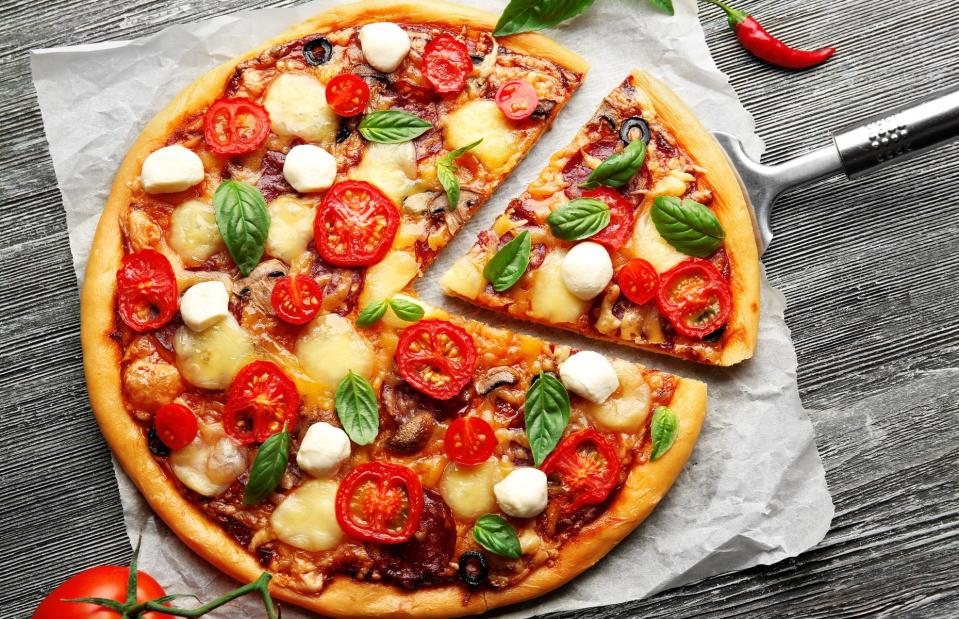
Africa Studio/Shutterstock
Pizza is just a bread dough and yet another flatbread we've come to love. Homemade is far superior to takeout pizza and a fun thing to make with kids who can design their own toppings. Our top tip? Allow the dough to rise really slowly for 24 hours in the fridge. This helps to give you that sourdough flavor.
Get the recipe for Margherita pizza here
Recipe: breakfast bread

Y Photo Studio/Shutterstock
Once you become confident in your bread-baking, you can add ingredients to a basic wholemeal bread recipe. Buy a pack of mixed, unsalted seeds, then add cranberries or sultanas. Toast some hazelnuts or walnuts then chop them finely and add to the dough. With time, you'll develop your own signature recipe.
Recipe: spiced breadsticks
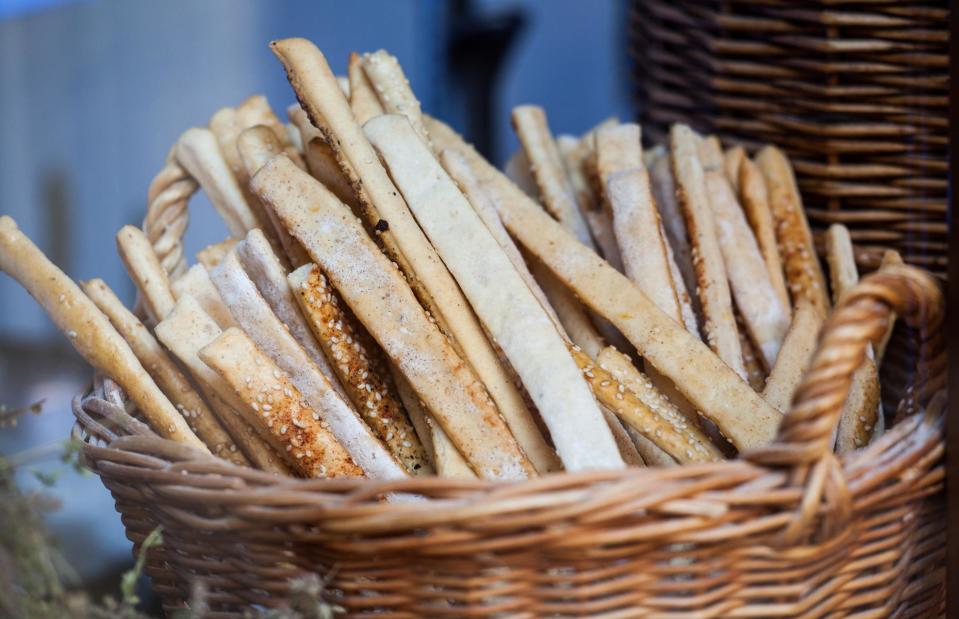
Vasyl Rohan/Shutterstock
Store-bought breadsticks tend to be bland and dull, and you could do so much more with them. Try adding spices like garam masala and cumin, or dried basil, poppy seeds and grated Parmesan. You can bake then freeze to have breadsticks on standby – just flash in a hot oven to reheat.
Get the recipe for spiced breadsticks here
Recipe: plaited loaf
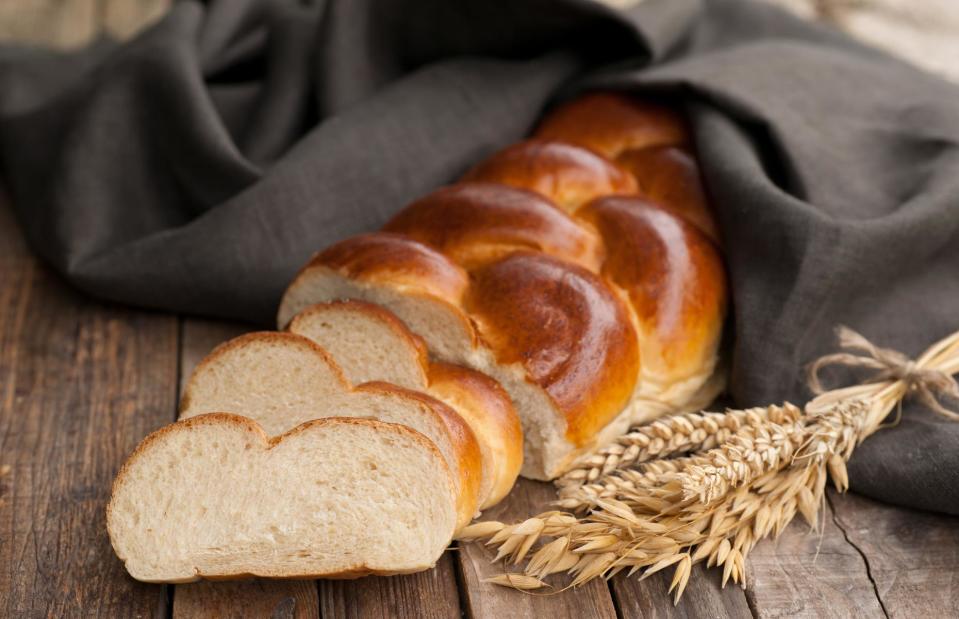
Christian Jung/Shutterstock
A plaited, or braided, bread is a thing of simple beauty. Breads are often plaited for special occasions, and the amount of strands and shape are symbolic. To make, simply divide the dough into the amount of strands you need and stick them together at the top, then start braiding or plaiting.
Recipe: bagels
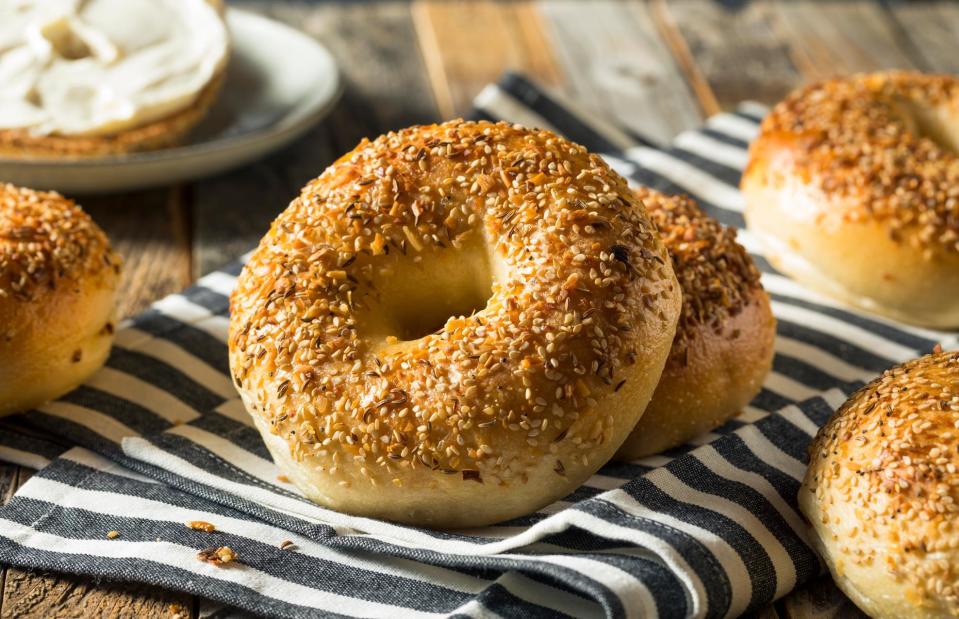
Brent Hofacker/Shutterstock
If ever there was a difference between shop-bought and homemade, it's in a bagel. The technique which gives bagels that chewy crust and dense exterior is in the boiling, or poaching of the dough, before you bake the bagels. But this is a very brief process so do time it accurately. Over-boiled bagels are tough, rather than chewy.
Get the recipe for blueberry and cranberry bagels here
Recipe: super-seedy bread
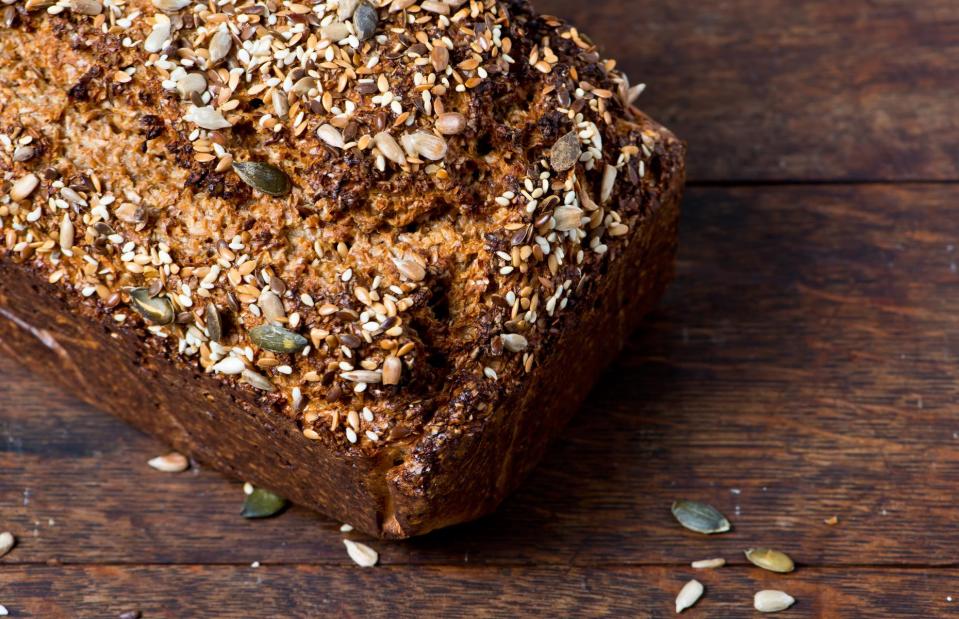
mubus7/Shutterstock
Everyone loves seeded bread and you can add any seeds of your choice to your favorite recipe. Try pumpkin, flaxseed, sesame or even nuts which means you're also adding healthy omega-3 fatty acids and fiber to your loaf. And wow, does it make great toast.
Get the recipe for super-seeded bread here
Recipe: simple sourdough
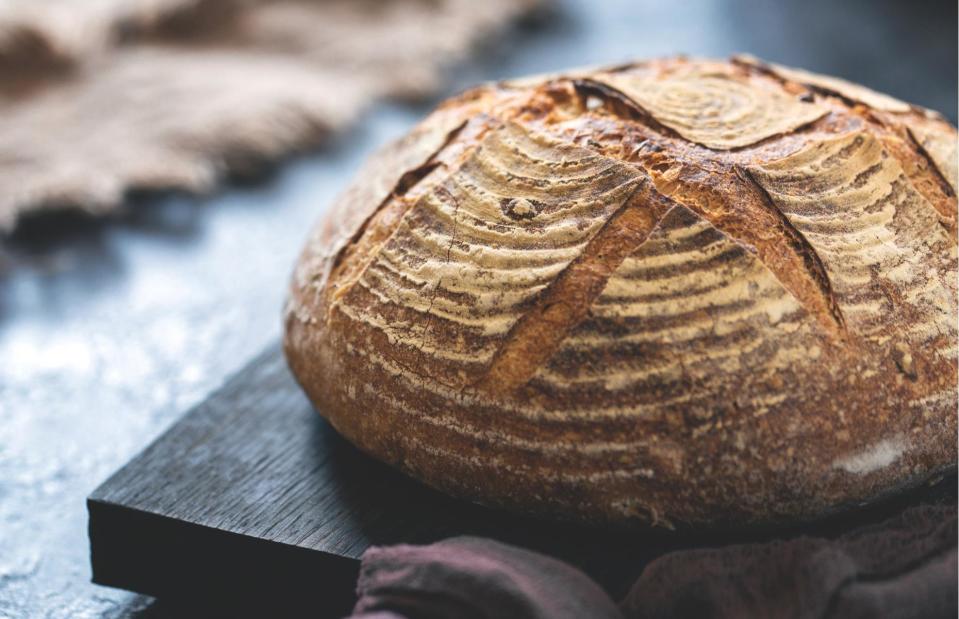
Ievgeniia Maslovska/Shutterstock
Let's face it – buying a sourdough loaf from a bakery costs a fortune, especially given that it's just flour and water. The expensive element is your time but luckily most of it isn't hands on. You'll need a few attempts to get it right as the sourdough will vary depending on the weather and the temperature but it's a great cooking project to get stuck into.
Find more tips for making sourdough in our complete bread-making guide


